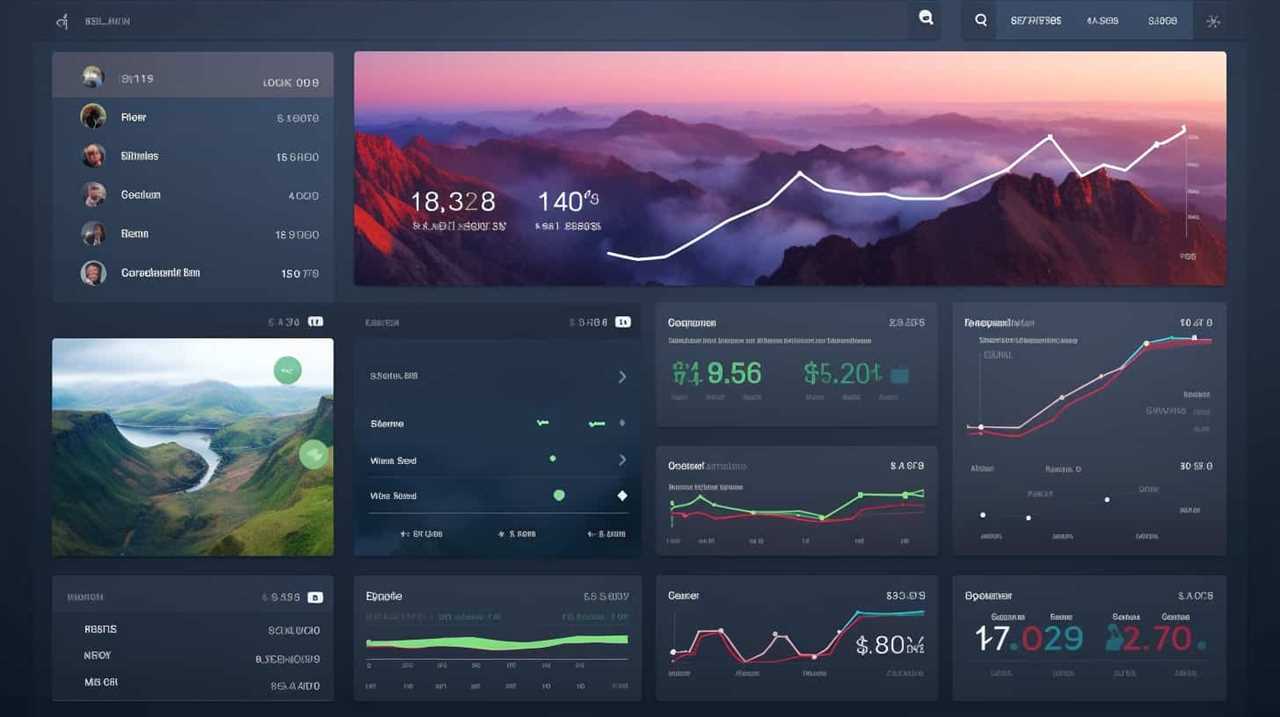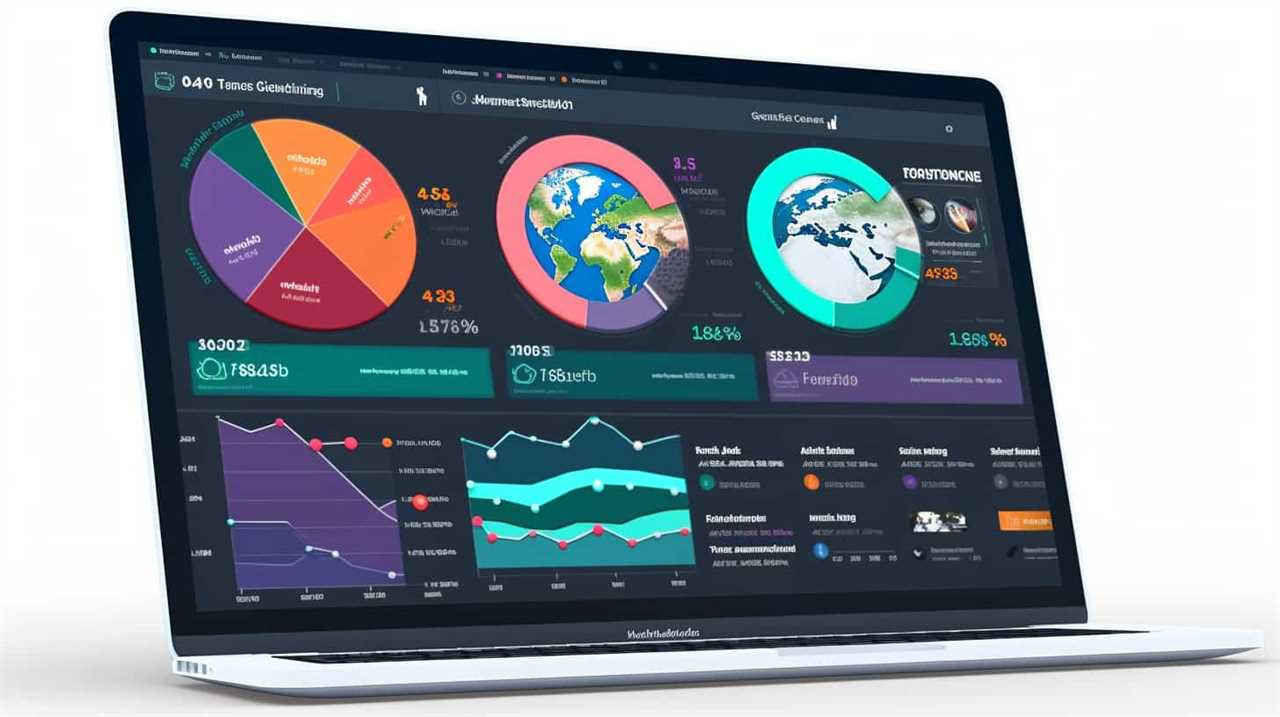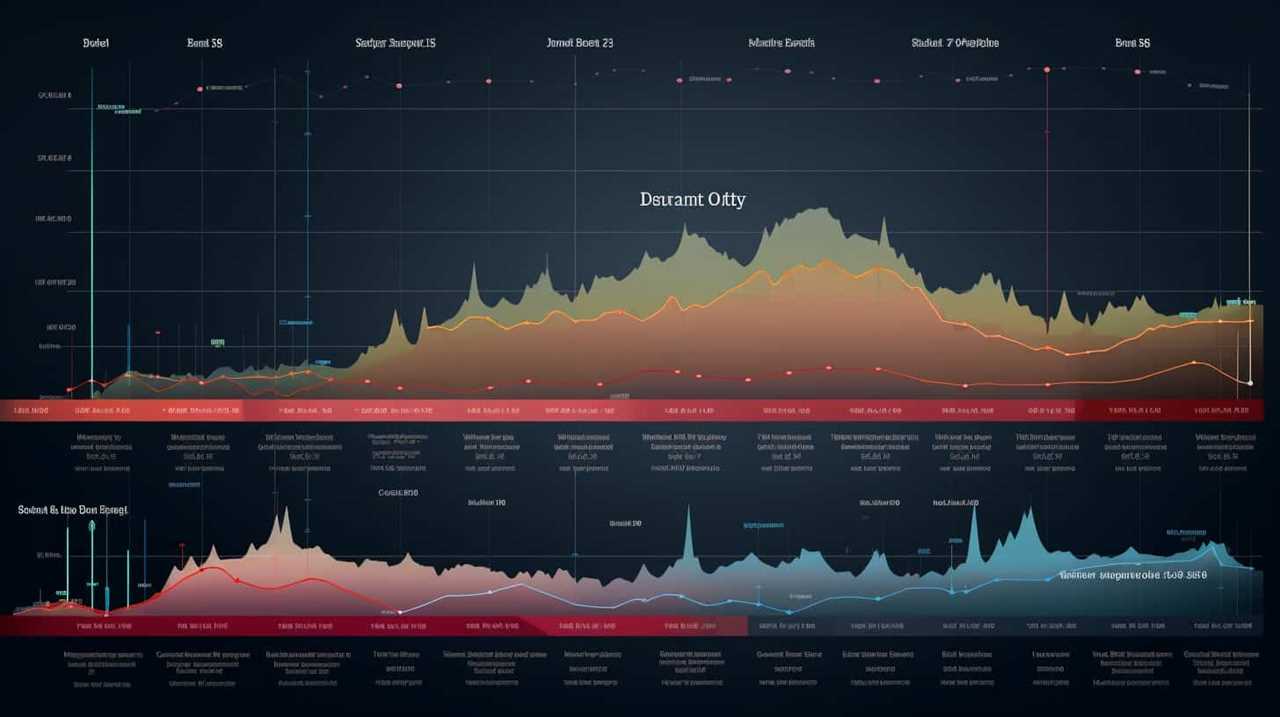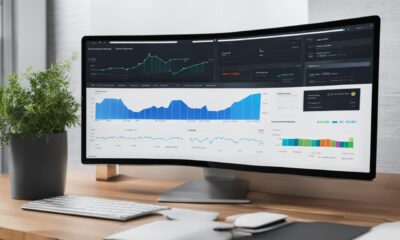Holistic SEO
15 Tips for Optimizing Creative Content for SEO

Do you feel frustrated by creating content that goes unnoticed? We understand how disheartening that can be. But don’t give up just yet, as we have 15 innovative strategies to enhance the search engine optimization of your creative content.
From mastering keyword research to crafting engaging titles, we’ll show you how to make your content shine in the eyes of search engines.
Get ready to take your content to the next level and dominate the rankings.
Let’s dive in!
Key Takeaways
- Incorporate relevant and engaging titles with strategic keyword placement.
- Optimize meta descriptions and content with target keywords for improved search engine understanding.
- Enhance website loading speed through various optimization techniques.
- Focus on user experience and promotion through content structure, mobile optimization, and social media engagement.
Understand Keyword Research
We strongly believe that understanding keyword research is crucial for optimizing creative content for SEO.
Keyword analysis and competitive research are two essential components of this process.
Keyword analysis involves identifying the right keywords and phrases that are relevant to your content and have high search volume. This helps to attract the right audience to your website.
Competitive research, on the other hand, involves analyzing the keywords that your competitors are targeting and understanding their strategies. This allows you to identify gaps and opportunities in the market and create content that can outrank your competition.
By conducting thorough keyword analysis and competitive research, you can ensure that your creative content is optimized for maximum visibility and organic traffic.
Now, let’s move on to the next section where we’ll discuss the importance of using relevant and engaging titles.
Use Relevant and Engaging Titles
When it comes to optimizing creative content for SEO, one of the most crucial aspects is using relevant and engaging titles.
The length of the title plays a significant role in attracting readers, so it’s important to strike a balance between being concise and informative.

Additionally, incorporating relevant keywords into the title can help improve visibility in search engine results.
Ultimately, finding the right blend of creativity and SEO optimization can make a significant impact on the success of your content.
Title Length Importance
To optimize creative content for SEO, it’s crucial to prioritize the importance of title length by using relevant and engaging titles.
The length of your title plays a significant role in improving SEO ranking and attracting more organic traffic to your website.
A well-crafted title should be concise, yet descriptive enough to entice readers and search engines.
It should contain relevant keywords that are strategically placed to capture the attention of your target audience.
A title that’s too short may not provide enough context, while a title that’s too long can be overwhelming and get cut off in search results.
Keywords in Titles
In the context of optimizing creative content for SEO, incorporating relevant and engaging titles is crucial for increasing organic traffic to your website. When it comes to title optimization, there are a few key strategies to keep in mind:
- Conduct thorough keyword research to identify the most relevant and high-performing keywords for your content.
- Place your primary keyword at the beginning of your title to maximize its impact.
- Use action verbs and power words to make your titles more compelling and enticing.
- Keep your titles concise and clear, aiming for a length of 50-60 characters to ensure they display properly in search engine results.
- Test different variations of your titles to see which ones resonate the most with your target audience.
Balancing Creativity and SEO
Now that we’ve discussed the importance of incorporating relevant and engaging titles in optimizing creative content for SEO, how can we effectively balance creativity and SEO while using these titles?
Balancing creativity and SEO requires using creative content strategies that are also SEO friendly. One way to achieve this balance is by conducting keyword research to identify relevant and high-ranking keywords that can be incorporated into the titles.
By strategically placing these keywords in the titles, we can ensure that our creative content is optimized for search engines while still maintaining its creativity and engagement.
Additionally, it’s important to write titles that accurately reflect the content of the page, as this helps both search engines and users understand what the page is about.
Optimize Meta Descriptions
Our strategy for optimizing meta descriptions involves using compelling copy to entice users and improve click-through rates. A well-crafted meta description not only provides a concise summary of the page content but also entices users to click on the search result.
Here are some best practices for optimizing meta descriptions:
- Keep it concise: Stick to around 150 characters to ensure your description isn’t truncated in search results.
- Use keywords strategically: Incorporate relevant keywords naturally to improve search visibility.
- Highlight unique value: Showcase the unique features or benefits of your content to differentiate it from competitors.
- Create a call-to-action: Encourage users to take action by including phrases like ‘Learn more’ or ‘Discover now.’
- Test and refine: Continuously monitor your click-through rates and experiment with different variations to find the most effective meta description.
Incorporate Target Keywords Strategically
When it comes to incorporating target keywords strategically, there are a few key techniques to keep in mind.
Firstly, consider the placement of your keywords throughout your content, ensuring they appear in important areas such as headings, titles, and the first paragraph.
However, it’s important to balance keyword usage with natural language, as keyword stuffing can harm your SEO efforts.
Keyword Placement Techniques
We strategically incorporate target keywords in our creative content using effective keyword placement techniques. By strategically placing keywords throughout our content, we can improve our keyword density and increase our chances of ranking higher in search engine results.
Here are five keyword placement techniques that we employ to optimize our content for SEO:
- Incorporating keywords in the headline: We make sure to include our target keywords in the headline to signal to search engines what our content is about.
- Using keywords in the introduction: We introduce our target keywords early on in the content to give search engines a clear understanding of the topic.
- Sprinkling keywords throughout the content: We strategically scatter our target keywords throughout the content, ensuring they’re relevant and flow naturally within the context.
- Including keywords in subheadings: We use subheadings to break up our content and include our target keywords in them to further highlight the topic.
- Using long tail keywords: We incorporate long tail keywords, which are more specific and have lower competition, to attract targeted traffic and improve our chances of ranking higher.
Balancing Keywords Naturally
To ensure a natural balance of keywords in our creative content, how can we strategically incorporate target keywords while maintaining readability and user experience?
One effective way is to focus on keyword density. By analyzing the percentage of target keywords compared to the total word count, we can ensure that our content remains optimized without sounding forced or unnatural.
However, it’s important to remember that readability and user experience should always be prioritized. To achieve this, we can utilize natural language processing techniques. This involves using variations of our target keywords and incorporating them seamlessly into our content.
By doing so, we can maintain a high level of readability while still optimizing our content for search engines.
Striking the right balance between incorporating target keywords strategically and providing a positive user experience is key to optimizing creative content for SEO.
Effective Keyword Integration
One way we can effectively incorporate target keywords while maintaining readability and user experience is by strategically integrating them throughout the content.
- Conducting effective keyword research: Before incorporating keywords into our content, it’s essential to conduct thorough keyword research. This helps us identify relevant keywords with high search volumes and low competition.
- Optimizing content length: It’s crucial to strike a balance between providing valuable information and keeping our content concise. By optimizing the length of our content, we can ensure that it isn’t overwhelming for readers while still providing enough depth to address their needs.
- Utilizing headings and subheadings: Incorporating target keywords in headings and subheadings not only helps with SEO but also improves the readability of our content.
- Including keywords in the introduction and conclusion: Placing target keywords strategically in the introduction and conclusion of our content helps search engines understand the context and relevance of our content.
- Using keywords naturally within the body: While it’s important to include target keywords throughout the content, it’s equally important to use them in a natural and organic manner that enhances the flow and readability of our writing.
Create Unique and Valuable Content
When aiming to optimize creative content for SEO, it’s crucial to craft content that’s both unique and valuable to users.
Creating engaging content is essential in capturing the attention of your target audience and keeping them on your website for longer periods. By providing valuable information, insights, or entertainment, you establish your expertise and build trust with your readers.
Moreover, the importance of originality can’t be overstated. Search engines favor unique content, as it adds value to their users and sets you apart from your competitors.
To ensure your content is both unique and valuable, conduct thorough research on your topic, present fresh perspectives, and provide actionable takeaways.
Optimize Image Alt Tags
When it comes to optimizing our creative content for SEO, one important aspect to consider is the optimization of image alt tags. Alt tags play a crucial role in helping search engines understand what our images are about, so it’s essential to choose relevant keywords that accurately describe the image.
Additionally, we should aim to make our alt tags descriptive and concise, providing a clear and concise summary of the image’s content.
Importance of Alt Tags
Our team understands the importance of optimizing image alt tags for SEO. Alt tags, also known as alternative text, are HTML attributes that describe the content of an image. These tags play a crucial role in improving the accessibility and visibility of your website.
Here are five reasons why alt tags are essential for optimizing images:
- Improved SEO: Alt tags provide search engines with valuable information about your images, helping them understand your content better and potentially improving your search engine rankings.
- Enhanced User Experience: Alt tags assist visually impaired users who rely on screen readers to understand the images on your website.
- Increased Web Traffic: Optimized alt tags can drive organic traffic to your website through image search results.
- Reduced Bounce Rates: Relevant alt tags ensure that visitors find the information they’re looking for, reducing the likelihood of them leaving your site immediately.
- Compliance with Web Standards: Including alt tags in your images helps you meet accessibility guidelines and ensures your website is accessible to all users.
Choosing Relevant Keywords
To optimize image alt tags for SEO, we focus on choosing relevant keywords. Selecting the right keywords is crucial for improving the visibility of your content in search engine results.
Start by conducting thorough keyword research using various techniques such as analyzing search volume, competition, and relevance to your target audience. Consider long-tail keywords, as they tend to be more specific and have less competition.
Additionally, optimize your content for voice search by incorporating conversational phrases and natural language. With the rise of voice assistants like Siri and Alexa, it’s important to adapt your content to cater to voice search queries.
Descriptive and Concise
Optimizing image alt tags requires using descriptive and concise language. When it comes to SEO, the way we label our images can greatly impact our search rankings. Here are some tips for optimizing image alt tags effectively:
- Use descriptive keywords: Incorporate relevant keywords that accurately describe the image content.
- Be concise: Keep the alt tag brief and to the point, while still conveying the image’s context.
- Prioritize user intent: Consider the user’s search intent and optimize alt tags accordingly.
- Provide context: Use alt tags to give additional information about the image, helping users and search engines understand its purpose.
- Optimize for accessibility: Alt tags are crucial for visually impaired users, so make sure they accurately describe the image for screen readers.
Use Header Tags Effectively
When using header tags effectively, we can enhance the SEO optimization of our creative content. Header tag optimization plays a crucial role in making our content more SEO friendly and improving its visibility on search engine result pages (SERPs).
To utilize header tags effectively, it’s important to strategically incorporate relevant keywords that align with our content and target audience’s search intent. By using H1 tags for main headings and H2-H6 tags for subheadings, we can create a clear and organized structure for our content, making it easier for search engines to understand and index.
Additionally, header tags provide a hierarchy that helps readers navigate through our content, improving the overall user experience. Thus, by using header tags effectively, we can optimize our creative content for SEO and increase its chances of ranking higher in search results.

Improve Website Loading Speed
When it comes to optimizing website loading speed, there are several key techniques that we can implement.
One important aspect is using caching and compression techniques to reduce the size of files and improve load times.
Another strategy is minimizing JavaScript and CSS, which can help streamline the code and enhance performance.
Additionally, optimizing images by compressing them and using proper file formats can significantly improve website loading speed.
Caching and Compression Techniques
One important technique to consider for improving website loading speed is implementing caching and compression. These techniques optimize the performance of your website by reducing the amount of data that needs to be transferred between the server and the user’s browser.
Here are five important caching and compression techniques to help improve your website’s loading speed:
- Utilize browser caching to store static resources like images, CSS, and JavaScript files locally on the user’s device.
- Enable server-side caching to generate cached versions of your web pages, reducing the processing time required to serve them to users.
- Implement file compression techniques like Gzip or Brotli to reduce the size of your website’s files, making them faster to load.
- Leverage content delivery networks (CDNs) to distribute your website’s assets across multiple servers, improving loading times for users in different locations.
- Minify and combine your CSS and JavaScript files to reduce the number of HTTP requests and improve loading speed.
By implementing these caching and compression techniques, you can significantly enhance your website’s loading speed and provide a better user experience.
Now, let’s explore the next topic: minimizing JavaScript and CSS.

Minimizing JavaScript and CSS
To improve website loading speed, we can minimize JavaScript and CSS.
By minimizing file sizes and reducing code complexity, we can significantly enhance the performance of our website.
Minimizing JavaScript involves removing unnecessary code, eliminating duplicate functions, and combining multiple scripts into one file. This not only reduces the file size but also decreases the number of HTTP requests, resulting in faster loading times.
Similarly, minimizing CSS involves removing unused styles, optimizing selectors, and compressing the code. This helps reduce the amount of data that needs to be downloaded, ultimately improving the loading speed of our webpages.
By implementing these techniques, we can ensure a seamless user experience and enhance our website’s SEO.
Now let’s move on to the next section about image optimization for speed.
Image Optimization for Speed
In order to further improve website loading speed, we can optimize images to reduce their file sizes and enhance performance. This can be achieved through image compression techniques and implementing responsive design practices.
Here are some tips for optimizing images for speed:
- Use the correct file format: Choose the appropriate format such as JPEG for photographs and PNG for graphics.
- Resize images: Scale down the dimensions of the images to match the required display size.
- Compress images: Reduce the file size without compromising on image quality using tools like TinyPNG or JPEGmini.
- Lazy loading: Implement lazy loading to load images only when they’re visible on the screen.
- Use CSS sprites: Combine multiple images into one to reduce HTTP requests.
Optimize URL Structure
We recommend optimizing the URL structure to improve SEO for creative content. URL structure optimization plays a crucial role in increasing keyword density and enhancing search engine visibility.
When optimizing URLs, it’s important to ensure they’re concise, descriptive, and include relevant keywords. This helps search engines understand the content of the page and improves its chances of ranking higher in search results.
A well-structured URL also enhances user experience, making it easier for visitors to navigate your website.
To optimize your URL structure, consider removing unnecessary characters, using hyphens to separate words, and keeping URLs short and meaningful.
Utilize Internal Linking
By incorporating internal linking, we can effectively enhance the SEO performance of creative content. Internal linking refers to the practice of linking one page of a website to another page within the same domain. This strategy not only helps search engines understand the structure and hierarchy of your website but also improves user experience by guiding them to relevant and related content.
Here are some internal linking strategies to optimize your creative content:
- Use descriptive anchor text: When creating internal links, use relevant keywords in the anchor text to provide context and improve SEO.
- Link to relevant pages: Ensure that the linked pages are related to the current content, as this helps search engines understand the topic and relevance.
- Prioritize deep linking: Instead of only linking to your homepage, distribute internal links throughout your website to improve the visibility of all pages.
- Update and maintain your internal links: Regularly check and update your internal links to ensure they’re still valid and lead to the intended pages.
- Create a logical site structure: Organize your website in a hierarchical manner, with clear categories and subcategories, to make it easier for search engines to crawl and index your content.
Enhance User Experience and Readability
To optimize user experience and readability, it’s important to focus on enhancing the structure and formatting of your creative content.
By improving readability, you can increase user engagement and make your content more appealing to your target audience.
One way to improve readability is by using headings and subheadings to break up your content into smaller, easily digestible sections. This helps readers navigate through your content and find the information they need more efficiently.
Additionally, using bullet points and numbered lists can make your content more organized and scannable.
Another important aspect of enhancing user experience is by using clear and concise language. Avoid using jargon or complex terms that might confuse your readers. Instead, use simple and straightforward language that’s easy to understand.
Optimize for Mobile Devices
When optimizing creative content for SEO, it’s crucial to ensure that it’s optimized for mobile devices. With the increasing number of people accessing the internet through their smartphones and tablets, mobile optimization has become a necessity.
Here are some key considerations for optimizing your content for mobile devices:
- Responsive Design: Create a website that adapts to different screen sizes and resolutions, providing a seamless user experience across devices.
- Fast Loading Speed: Mobile users tend to have shorter attention spans, so optimize your website for quick loading to prevent users from bouncing.
- Clear and Concise Content: Mobile screens are smaller, so make sure your content is concise, easy to read, and visually appealing.
- Simple Navigation: Use clear and intuitive navigation menus to help users easily find the information they need.
- Mobile-Friendly Forms: Streamline your forms by using auto-fill, drop-down menus, and other mobile-friendly features for a smooth user experience.
Implement Schema Markup
Now let’s delve into the next step of optimizing creative content for SEO: implementing schema markup, which enhances the visibility and understanding of your website’s information by search engines.
Schema markup implementation is a crucial aspect of SEO that helps search engines better understand the content on your website and display it in a more informative and visually appealing way in search results.
By adding schema markup, you can provide additional context to your content, such as the type of content, author information, ratings, and more. This not only improves your website’s chances of ranking higher in search results but also increases the likelihood of attracting more qualified traffic.
To ensure effective implementation of schema markup, it’s important to follow best practices for schema markup, such as using the correct schema types, structuring the data correctly, and regularly testing and monitoring the markup for any errors or issues.
By implementing schema markup, you can significantly enhance your website’s visibility and improve its performance in search engine rankings.
Now, let’s move on to the next step: leveraging social media for content promotion.
Leverage Social Media for Content Promotion
Now, let’s explore how we can effectively leverage social media to promote our creative content and further enhance its visibility and reach.
Here are five strategies to optimize social media engagement and drive traffic to our content:
- Develop a comprehensive social media strategy that aligns with our goals and target audience.
- Create compelling and shareable content that resonates with our audience and encourages them to engage and share.
- Utilize relevant hashtags to increase the visibility of our content and attract a wider audience.
- Engage with our followers by responding to comments and messages promptly, fostering a sense of community and encouraging further engagement.
- Collaborate with influencers in our industry to amplify our reach and tap into their established audience.
Monitor and Analyze SEO Performance
To effectively monitor and analyze SEO performance, we can utilize various tools and techniques.
Monitoring and analyzing SEO performance is crucial for understanding how well our content is performing in search engine rankings. By tracking key metrics such as organic traffic, keyword rankings, and conversion rates, we can gain valuable insights into the effectiveness of our SEO strategies.
One important aspect of monitoring SEO performance is effective keyword integration. By analyzing keyword performance, we can identify which keywords are driving the most traffic and conversions, and make adjustments to our content accordingly. This helps us optimize our content for better search engine visibility and higher organic rankings.
Additionally, monitoring SEO performance allows us to identify any issues or areas for improvement, ensuring that we continuously optimize our content and stay ahead of the competition.
Frequently Asked Questions
How Can I Improve the Loading Speed of My Website?
Improving website loading speed is crucial. We use techniques like caching, optimizing images, and minimizing code to increase speed. These improvements enhance user experience and boost SEO rankings.
What Is Schema Markup and How Can It Be Implemented?
Implementing schema markup on a website has numerous benefits. It helps search engines understand and display content more effectively, improving visibility and increasing click-through rates. We can guide you through the process of schema markup implementation.
How Do I Optimize My Content for Mobile Devices?
To optimize our content for mobile devices, we focus on mobile friendly design and responsive web design. By ensuring our website adapts seamlessly to different screen sizes, we provide a user-friendly experience that drives engagement and boosts SEO rankings.
What Are Some Ways to Enhance User Experience and Readability?
Improving accessibility and enhancing visual appeal are key to enhancing user experience and readability. By incorporating these strategies, we can optimize creative content for SEO and create a more engaging and mastery-focused audience experience.
How Can Social Media Be Leveraged for Content Promotion?
To optimize content promotion, we leverage social media engagement and influencer partnerships. By strategically utilizing these channels, we can amplify our message, reach a wider audience, and enhance brand visibility.
What Are the Best SEO Strategies for Optimizing Creative Content?
When it comes to optimizing creative content, incorporating the best ways to optimize creative content is essential for effective SEO. This includes conducting thorough keyword research to target relevant phrases, optimizing meta tags and headings, ensuring proper URL structure, and creating engaging and shareable content. Incorporating backlinks from authoritative sources and promoting content through social media platforms are also integral parts of a successful SEO strategy. By employing these techniques, you can enhance your website’s visibility and drive organic traffic.
Conclusion
In our quest to optimize creative content for SEO, we’ve uncovered the keys to unlocking success.
By understanding keyword research, creating unique and valuable content, and optimizing for mobile devices, we’ve paved the way for higher rankings and increased visibility.
With a touch of social media magic and the power of analytics, we can now soar to new heights.
So let’s embrace these strategies, spread our wings, and watch our content soar to the top of the search engine skies.
Chris, SEO and Keywords Expert & Author: Chris lives and breathes SEO. With a deep understanding of keyword research and strategy, he’s our go-to guru for everything related to search rankings. Chris has a knack for identifying trends and opportunities in the SEO world, making him an invaluable asset to our team and our clients.
Holistic SEO
Guide to Holistic SEO for Optimal Website Performance

Welcome to our detailed guide on Complete SEO for maximizing website performance.
Are you ready to master the art of driving organic traffic and improving your online presence?
In this article, we will delve into the importance of holistic SEO and provide you with practical on-page optimization techniques, off-page optimization strategies, and technical SEO best practices.
We will also explore how to measure and analyze your website’s performance to ensure continuous growth.
Get ready to take your website to the next level!
Key Takeaways
- User experience is crucial for website performance, leading to longer stay and higher conversion rates.
- Integrating social media enhances holistic SEO strategy, increasing audience engagement, brand awareness, and traffic.
- On-page optimization techniques, such as keyword research and content optimization, improve website visibility and ranking on search engine result pages (SERPs).
- Off-page optimization strategies, including guest blogging and backlink building, enhance website visibility and organic traffic.
Importance of Holistic SEO
In our experience, holistic SEO is vital for achieving optimal website performance. The role of user experience in holistic SEO can’t be overstated. When users have a positive experience on your website, they’re more likely to stay longer, explore further, and ultimately convert into customers. This is why it’s important to focus on elements such as page load speed, mobile responsiveness, and intuitive navigation.
Additionally, integrating social media into your holistic SEO strategy can have numerous benefits. Social media platforms provide an opportunity to engage with your audience, build brand awareness, and drive traffic to your website. By sharing valuable content and encouraging social sharing, you can increase your online visibility and attract more organic traffic.
As we transition into the subsequent section about on-page optimization techniques, it’s important to remember that a holistic SEO approach considers all aspects of your website to ensure maximum performance.
On-Page Optimization Techniques
To optimize your website’s performance, we’ll now delve into the subtopic of on-page optimization techniques. On-page optimization plays a crucial role in improving your website’s visibility and ranking on search engine result pages (SERPs).
Two key components of on-page optimization are keyword research and content optimization.
Keyword research involves identifying the most relevant and high-performing keywords that align with your website’s content and target audience. By conducting comprehensive keyword research, you can optimize your website’s content to increase its chances of ranking higher in search engine results.
Content optimization focuses on optimizing the various elements on your web pages, such as headings, meta tags, URLs, and image alt text, to make them more search engine friendly. This includes incorporating target keywords strategically throughout your content and ensuring it’s relevant, engaging, and well-structured.
Off-Page Optimization Strategies
We will now explore the effectiveness of incorporating off-page optimization strategies into our holistic SEO approach. Off-page optimization refers to the techniques used outside of our website to improve search engine rankings.
Two key strategies for off-page optimization are guest blogging and backlink building.
Guest blogging involves writing and publishing content on other websites within our industry. This allows us to showcase our expertise, reach a wider audience, and build valuable backlinks to our website.
Backlink building is the process of acquiring links from other websites that point back to our own. These links act as votes of confidence and authority, signaling to search engines that our website is trustworthy and relevant.
By implementing these off-page optimization strategies, we can enhance our website’s visibility, increase organic traffic, and improve search engine rankings.
It’s essential to have a well-rounded SEO approach that includes both on-page and off-page optimization techniques to achieve optimal website performance.
Technical SEO Best Practices
Continuing our exploration of effective off-page optimization strategies, let’s now delve into the realm of technical SEO best practices.
When it comes to optimizing your website for search engines, conducting an SEO audit is crucial. An SEO audit checklist can help ensure that all technical aspects of your website are in order. It involves assessing factors such as website speed, mobile-friendliness, URL structure, and metadata optimization.

Another important aspect of technical SEO is keyword research. By utilizing keyword research techniques, you can identify the most relevant and high-performing keywords to target on your website. This will help improve your website’s visibility and drive organic traffic.
Technical SEO plays a vital role in optimizing your website’s performance and ensuring that it’s easily discoverable by search engines.
Measuring and Analyzing Website Performance
As we delve into the realm of measuring and analyzing website performance, let’s explore the importance of utilizing data-driven insights to optimize our website for optimal results.
Website analytics play a crucial role in understanding how our website is performing and identifying areas for improvement. By analyzing metrics such as traffic sources, page views, bounce rate, and conversion rate, we can gain valuable insights into user behavior and preferences.
These insights allow us to make informed decisions about our website’s design, content, and marketing strategies. Monitoring conversion rate is especially important as it directly impacts our website’s effectiveness in achieving its goals, whether it’s generating leads, making sales, or increasing engagement.
Frequently Asked Questions
How Long Does It Take to See Results From Holistic SEO Efforts?
On average, it takes time to see results from holistic SEO efforts. Success is measured by tracking website performance over time. This guide provides insights on optimizing SEO for optimal website performance.
Can I Implement Holistic SEO Strategies on My Own, or Do I Need to Hire an SEO Agency?
Implementing holistic SEO strategies on your own or hiring an agency? Weigh the pros and cons. DIY can save money but requires time and expertise. Hiring an agency provides expertise but can be costly. Measure success through improved website performance.
What Are Some Common Mistakes to Avoid When Implementing Holistic Seo?
When implementing holistic SEO, it’s important to avoid common mistakes to ensure optimal website performance. By understanding the benefits of holistic SEO in e-commerce websites, we can achieve mastery in our SEO strategies.
Are There Any Specific Industries or Types of Websites That Can Benefit the Most From Holistic Seo?
In our experience, specific industries or types of websites that can benefit the most from holistic SEO include e-commerce, healthcare, and local businesses. Key factors to consider for successful implementation are keyword research, content optimization, and technical SEO.
How Does Holistic SEO Differ From Traditional SEO Practices?
Holistic SEO differs from traditional SEO practices in its focus on long-term success and a comprehensive approach. It emphasizes the benefits of optimizing all aspects of a website, including content, user experience, and technical elements, for optimal performance and search engine visibility.
What Are the Key Strategies to Achieve Full-Scale Website Optimization with Holistic SEO?
Implementing holistic seo website optimization requires a combination of key strategies. Firstly, conducting comprehensive keyword research to understand user intent is crucial. Next, optimizing on-page elements such as meta tags, headers, and content structure ensure search engines understand your website fully. Additionally, creating unique and valuable content, optimizing site speed, and prioritizing mobile responsiveness contribute to a holistic SEO approach. Building quality backlinks and monitoring analytics regularly further refine optimization efforts.
Conclusion
In conclusion, implementing holistic SEO is essential for achieving optimal website performance. By focusing on both on-page and off-page optimization techniques, as well as technical SEO best practices, you can boost your website’s visibility and organic traffic.
It’s like tending to a well-maintained garden, where each aspect contributes to the overall beauty and health of the plants. By measuring and analyzing website performance, you can continuously improve and refine your SEO strategy, ensuring long-term success.

Holistic SEO
Mastering Holistic SEO for Full-Scale Website Optimization

Are you prepared to master comprehensive SEO in order to improve your entire website? We are here to help you.
In this article, we’ll guide you through the fundamentals of holistic SEO, from keyword research and analysis to on-page and off-page optimization techniques.
We’ll also show you how to measure and analyze SEO performance to ensure maximum results.
Get ready to take your website to the next level and achieve true mastery in the world of SEO.
Let’s dive in.
Key Takeaways
- Content marketing strategies attract and engage the target audience.
- Thorough keyword research uncovers valuable keywords.
- User experience optimization enhances engagement and conversions.
- Mastering keyword research maximizes online visibility.
The Fundamentals of Holistic SEO
When implementing holistic SEO strategies, we prioritize understanding the fundamentals of optimizing a website for full-scale performance. One of the key aspects of holistic SEO is content marketing strategies. By creating valuable and relevant content, we can attract and engage our target audience while also improving our website’s visibility in search engine results. This involves conducting thorough keyword research, crafting compelling headlines, and optimizing our content with relevant keywords and meta tags.
Another fundamental aspect of holistic SEO is user experience optimization. It’s crucial to ensure that our website provides a seamless and enjoyable experience for users. This includes optimizing website speed, improving navigation and site structure, and making our content easily accessible and readable. By prioritizing user experience, we can enhance engagement, increase conversions, and improve overall website performance.
Keyword Research and Analysis
To continue our discussion on holistic SEO, let’s delve into the importance of keyword research and analysis for optimizing a website’s performance.
Keyword research is a critical step in understanding the search behavior of your target audience and identifying the most relevant and valuable keywords to target.
Here are four key reasons why keyword research and analysis are crucial for website optimization:
- Identify high-value keywords: By conducting competitive analysis and researching industry trends, you can uncover valuable keywords that have high search volume and low competition.
- Discover long tail keywords: Long tail keywords are more specific and less competitive, allowing you to target niche audiences and drive targeted traffic to your website.
- Optimize content: Keyword research helps you optimize your website content by strategically incorporating relevant keywords into your titles, headings, meta tags, and body content.
- Stay ahead of the competition: By continuously analyzing keywords and monitoring your competitors’ keyword strategies, you can stay ahead in the search rankings and attract more organic traffic.
Mastering keyword research and analysis is essential for achieving full-scale website optimization and maximizing your online visibility.
On-Page Optimization Techniques
Now let’s explore On-Page Optimization Techniques, which play a crucial role in enhancing a website’s performance and visibility.
On-page optimization focuses on optimizing individual web pages to improve their search engine rankings and attract more organic traffic. One key aspect of on-page optimization is content optimization, which involves creating high-quality, relevant, and keyword-rich content that resonates with your target audience.
This includes using appropriate headings, subheadings, and incorporating relevant keywords naturally throughout the content. Another important on-page optimization technique is optimizing meta tags, such as title tags and meta descriptions.
These tags provide a concise summary of the page’s content and help search engines understand what the page is about. By optimizing these elements, you can increase the chances of your website ranking higher in search engine results.
In the next section, we’ll delve into off-page optimization strategies to further enhance your website’s visibility and authority.
Off-Page Optimization Strategies
Continuing from the previous subtopic, we can explore off-page optimization strategies to further enhance our website’s visibility and authority. Off-page optimization focuses on improving our website’s reputation and credibility through external factors. Here are four key strategies to consider:
- Link Building: Building high-quality backlinks from reputable websites can significantly improve our website’s search engine rankings. It’s important to focus on acquiring natural and relevant links that demonstrate our authority and expertise in our industry.
- Social Media Presence: Having an active and engaging presence on social media platforms can help increase brand awareness, drive traffic to our website, and improve search engine visibility. It’s crucial to create valuable content and engage with our audience to build a strong online community.
- Guest Blogging: Collaborating with influential bloggers or industry experts to publish guest posts on their websites can help us reach a wider audience and gain valuable backlinks. It’s essential to choose relevant and reputable websites that align with our niche.
- Online Reputation Management: Monitoring and managing our online reputation is crucial for building trust and credibility. Responding to customer reviews, addressing negative feedback, and actively managing our brand image can positively impact our website’s visibility and authority.
By implementing these off-page optimization strategies, we can enhance our website’s visibility, credibility, and ultimately improve our overall SEO performance.
In the next section, we’ll explore the importance of measuring and analyzing SEO performance to ensure continuous improvement.
Measuring and Analyzing SEO Performance
Measuring and analyzing SEO performance is essential for evaluating the effectiveness of our optimization efforts and identifying areas for improvement. Without proper tracking and analysis of SEO data, we would be blindly implementing strategies without knowing whether they are yielding the desired results. By monitoring key metrics such as organic traffic, keyword rankings, and conversion rates, we can gain valuable insights into the performance of our website and make informed decisions to drive better results.
In addition to tracking our own SEO performance, competitor analysis is also crucial for staying ahead in the game. By analyzing the SEO strategies of our competitors, we can identify opportunities and uncover areas where we can outperform them. This involves evaluating their keyword rankings, backlink profiles, and content strategies to gain a competitive edge.
To help visualize the importance of measuring and analyzing SEO performance, here is a table showcasing some key metrics and their significance:
| Metric | Significance |
|---|---|
| Organic Traffic | Indicates the amount of traffic generated through search engines, reflecting the reach of our website. |
| Keyword Rankings | Shows how well our website ranks for targeted keywords, indicating visibility and competitiveness. |
| Conversion Rates | Measures the percentage of visitors who take desired actions, providing insights into website effectiveness. |
Frequently Asked Questions
What Is the Impact of Holistic SEO on Website Loading Speed?
The impact of holistic SEO on website loading speed is significant. By optimizing various elements such as code, images, and server response time, holistic SEO improves website performance, resulting in faster loading times and better rankings.
How Can I Optimize My Website for Voice Search Using Holistic SEO Techniques?
To optimize our website for voice search, we employ holistic SEO techniques. By focusing on keyword research, mobile optimization, and natural language content, we ensure our site is primed for voice search queries.
Are There Any Specific SEO Techniques for Optimizing Mobile Websites?
Yes, there are specific SEO techniques for optimizing mobile websites. A mobile first approach and responsive design are crucial. By prioritizing mobile users and ensuring a seamless experience, you can improve search rankings and overall website performance.
Can You Provide Examples of Successful Holistic SEO Strategies Implemented by Major Brands?
Successful holistic SEO strategies implemented by major brands showcase the importance of website loading speed. These brands prioritize optimization techniques such as mobile responsiveness, quality content creation, backlink building, and user experience enhancement.
How Does Holistic SEO Contribute to Improving User Experience on a Website?
Improving website usability and enhancing content relevance are key aspects of holistic SEO. By optimizing user experience, we ensure that visitors find what they need quickly and easily, increasing engagement and conversions.
What is the Difference Between Comprehensive SEO and Holistic SEO?
When it comes to digital marketing strategies, understanding the difference between comprehensive SEO and holistic SEO is crucial. While comprehensive SEO focuses on optimizing specific elements of a website to improve its search engine rankings, holistic SEO takes a broader approach and encompasses all aspects of an online presence, including content marketing. By integrating comprehensive seo in content marketing efforts, businesses can ensure their strategies align with search engine algorithms and reach a wider audience.
Conclusion
In conclusion, mastering holistic SEO is the ultimate key to unlocking full-scale website optimization. By seamlessly integrating keyword research, on-page optimization techniques, and off-page optimization strategies, we can achieve remarkable results in our SEO performance.

With a keen eye for analyzing and measuring our efforts, we can strategically optimize our website to attract maximum organic traffic and dominate the digital landscape.
Don’t settle for mediocre SEO, go all-in with holistic optimization and watch your website soar to new heights.
Holistic SEO
Impact of Social Media on Holistic SEO Practices

In the digital world, social media plays a crucial role in comprehensive SEO strategies. It helps enhance visibility, build brand awareness, and boost user engagement.
With its power to amplify content and strengthen online reputation, social media acts as a beacon, guiding our website towards higher search engine rankings and organic reach.
As we embark on this journey, let us delve into the symbiotic relationship between social media and holistic SEO, unveiling the impact it holds for our mastery in the digital realm.
Key Takeaways
- Social media platforms can be effectively utilized to increase visibility and brand awareness.
- Collaborating with influencers can boost brand visibility and reach a wider audience.
- Analyzing social media analytics helps to understand user behavior and optimize website traffic.
- Leveraging social media strategies can enhance SEO practices and improve search engine rankings.
Increased Visibility and Brand Awareness
To increase visibility and brand awareness, it’s essential that we utilize social media platforms effectively.
Social media advertising and influencer marketing play a crucial role in achieving these goals. By running targeted ad campaigns on platforms like Facebook, Instagram, and Twitter, we can reach a wider audience and increase our brand’s exposure. These platforms offer advanced targeting options, allowing us to reach specific demographics based on factors like age, location, and interests.
Additionally, collaborating with influencers who’ve a large and engaged following can significantly boost our brand’s visibility. Influencer marketing allows us to tap into the trust and influence that these individuals have built with their audience. By aligning our brand with influencers that resonate with our target market, we can increase awareness and credibility, leading to a higher likelihood of conversions and customer loyalty.
Improved Website Traffic and User Engagement
As we continue exploring the impact of social media on holistic SEO practices, it’s important to note how it contributes to improved website traffic and user engagement.
Social media analytics play a crucial role in understanding user behavior and preferences, allowing us to optimize our website to drive more targeted traffic. By analyzing data from social media platforms, we can identify the type of content that resonates with our target audience and tailor our SEO strategies accordingly.
Furthermore, influencer partnerships can significantly boost website traffic and user engagement. Collaborating with influencers who have a large following and influence in our industry can help us reach a wider audience and increase brand visibility. These partnerships can lead to higher engagement rates, increased website visits, and ultimately, improved search engine rankings.
With these tactics in place, we can ensure that our website receives higher traffic and engages users effectively. This sets the stage for the subsequent section on enhanced content distribution and amplification.
Enhanced Content Distribution and Amplification
We optimize our content distribution and amplify our reach through social media channels. By strategically targeting our outreach efforts and forming influencer partnerships, we ensure that our content reaches the right audience and receives maximum exposure. Through targeted outreach, we identify and engage with individuals and communities who are most likely to be interested in our content. This helps us connect with our target audience on a deeper level, fostering stronger relationships and driving higher engagement. Additionally, by partnering with influencers who have a strong following and influence in our niche, we are able to leverage their reach and credibility to amplify the distribution of our content. This results in increased visibility, brand awareness, and ultimately, higher conversions.
| Targeted Outreach | Influencer Partnerships |
|---|---|
| Identify relevant individuals and communities | Collaborate with influencers in our niche |
| Engage with target audience on a deeper level | Leverage their reach and credibility |
| Foster stronger relationships | Amplify distribution of content |
| Drive higher engagement | Increase visibility and brand awareness |
Strengthened Online Reputation and Credibility
Our strong online reputation and credibility are key assets in building trust with our audience. In today’s digital age, where information is readily available and opinions can spread quickly, it’s essential to manage our online credibility effectively. Reputation management plays a vital role in establishing and maintaining a positive image for our brand.
Here are four reasons why a strengthened online reputation is crucial:
- Increased trust: When our audience sees positive reviews, testimonials, and recommendations from others, it enhances their trust in our brand and establishes us as a credible source.
- Improved brand perception: A strong online reputation helps shape how our audience perceives our brand. Positive feedback and interactions can contribute to a positive brand image.
- Enhanced customer loyalty: When customers trust our brand, they’re more likely to stay loyal and recommend our products or services to others.
- Competitive advantage: In a crowded online marketplace, a strong online reputation sets us apart from our competitors. It gives us an edge and attracts potential customers who value credibility and reliability.
Boosted Search Engine Rankings and Organic Reach
Through the integration of social media, we can achieve higher search engine rankings and expand our organic reach. Social media advertising and influencer partnerships play a crucial role in boosting our website’s visibility and driving organic traffic.
Social media advertising allows us to target specific demographics and promote our content to a wider audience. By leveraging the advanced targeting options provided by social media platforms, we can reach users who are more likely to engage with our website and increase our chances of ranking higher in search engine results.
In addition, influencer partnerships enable us to tap into the existing follower base of popular influencers. By collaborating with influencers who align with our brand values, we can leverage their influence to reach a larger audience and drive more organic traffic to our website. This increased visibility can lead to higher search engine rankings, as search engines often prioritize websites with higher organic traffic.
Frequently Asked Questions
How Can Social Media Impact the Overall Visibility and Brand Awareness of a Business?
Social media’s impact on brand perception and leveraging social media influencers for business growth are key factors in increasing overall visibility and brand awareness. These strategies are essential for holistic SEO practices.
What Strategies Can Be Implemented to Improve Website Traffic and User Engagement Through Social Media Platforms?
To improve website traffic and user engagement through social media platforms, we can implement strategies such as website optimization and social media advertising. These tactics can increase visibility and attract more visitors to our site.
How Does Social Media Contribute to Enhanced Content Distribution and Amplification?
Social media reach is crucial for content amplification. It helps in enhancing content distribution by reaching a wider audience, increasing visibility, and driving traffic to websites. Social media’s impact on content amplification cannot be underestimated.
What Are Some Effective Ways to Strengthen Online Reputation and Credibility Using Social Media?
To build trust and establish authority using social media, we focus on strategies like consistently sharing valuable content, engaging with our audience, and showcasing positive customer testimonials. These tactics enhance our online reputation and credibility.
Can Social Media Efforts Alone Boost Search Engine Rankings and Organic Reach, or Should They Be Combined With Other SEO Practices?
Social media efforts alone may not boost search engine rankings and organic reach. Combining them with other SEO practices is crucial. Integration between social media and SEO is necessary for effective results. Social media analytics and measurement play a significant role in achieving mastery.
What Are the Key Ways That Social Media Influences Holistic SEO?
Social media’s impact on holistic seo is substantial. Firstly, it enhances website visibility by allowing businesses to share content and engage with their audience. Secondly, social signals from platforms like Facebook and Twitter contribute to search engines’ ranking algorithms. Lastly, social media drives organic traffic, which increases the likelihood of gaining quality backlinks. Overall, integrating social media into SEO strategy is essential for online success.
Conclusion
In conclusion, the impact of social media on holistic SEO practices is undeniable.
By leveraging social media platforms, businesses can increase their visibility and brand awareness, drive more website traffic and user engagement, distribute and amplify their content, and strengthen their online reputation and credibility.
This ultimately leads to boosted search engine rankings and organic reach.
Social media is like a powerful engine, propelling businesses towards their SEO goals with speed and efficiency.
-

 Expert Content Authority3 months ago
Expert Content Authority3 months agoThe Pillar of SEO: Why Content Consistency Matters Most
-

 Learning Center3 months ago
Learning Center3 months agoUncover How To Use ChatGPT to Write Effective Ad Copy
-

 Learning Center3 months ago
Learning Center3 months agoAI in 2024: 10 Things We are NOT Looking Forward To
-

 Holistic SEO7 hours ago
Holistic SEO7 hours agoHolistic Local SEO Tactics for Small Businesses
-

 Learning Center3 months ago
Learning Center3 months agoOptimize Your Digital Experience with Akamai CDN
-

 Learning Center3 months ago
Learning Center3 months agoUnbiased RankerX Review: A Deep Dive into Its SEO Capabilities
-

 Holistic SEO3 months ago
Holistic SEO3 months agoMoney Robot Review [2024]
-

 Learning Center3 months ago
Learning Center3 months agoExperience How GPT-4 Turbo Beats Claude 2: A Review

















